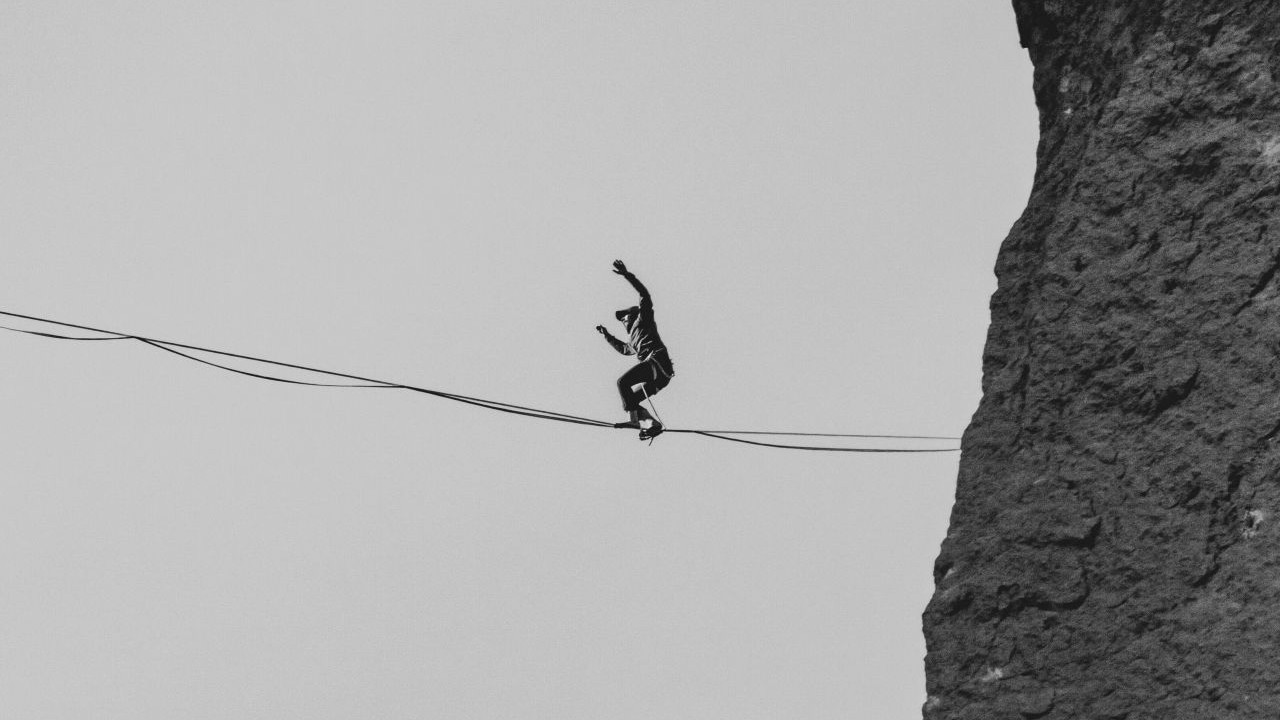Now twirl the pencil. Watch the orange and the tip of the pencil. What appears on the sheet? A dot, of course.
Stay with me, this is going somewhere.
Keep that image of the impaled orange in mind while I suggest expanding the pencil. And the orange. I mean really expanding them, so they become gigantic. So now I want you to imagine sticking that enormous pencil into the Earth, at its South Pole. Keep pushing on the pencil until its point emerges at the North Pole. Push some more, until the point reaches an equally gigantic sheet of cardboard you’re holding just above the North Pole.
With the pencil touching the cardboard, you stop pushing. But instead of twirling, you wait for a while; meaning, the Earth rotates on its axis, which is now marked by your enormous pencil, and that simulates the twirling.
Question: What appears on the cardboard?
Maybe you’re inclined to say, like with the orange, “a dot”. With the Earth rotating, and your pencil as an axis, the point of the pencil makes a small dot on the cardboard. As the planet rotates, the dot gets steadily darker and more pronounced. So if you retrieve the cardboard after a day, you probably think that’s what you’re likely to see: a dark shiny dot on the cardboard. Keep it there for longer and the dot will only get shinier.
Except, not quite. You’ll see a dot to start with. But as time goes by, the dot moves. In 24 hours, it will trace a circle with a radius of about 9 metres.
Why a circle?
One way to understand this is to imagine spinning a top. I don’t know how many kids these days have played with this wonderful toy, but when I was a kid, it was a popular one indeed. You hold it in one hand, wind a string tightly around it with the other. Then you throw it gracefully – either like you would a bowling ball or from shoulder height downwards – and snap back the string. If you’ve done it right, the top should land on the ground on its tip – usually an embedded screw – and spin rapidly on that point for half-a-minute or so.
Here’s the analogy to our planet. While the top spins rapidly, it stays almost perfectly upright. If it too had a pencil through its axis and a cardboard above, the pencil would produce a dot, or a near-dot. But as the top slows, it strays noticeably from being upright. The point of that pencil starts moving in a circle that grows steadily larger, until the top eventually, well, topples.
That’s about what’s happening with the Earth. Not that its spin is slowing, but the axis of its rotation deviates. This is known as the Chandler Wobble, named for the American astronomer Seth Carlo Chandler (1846-1913) who discovered it in 1891. It’s an example of a phenomenon known as “astronomical nutation”: given an object in space that spins, as many do, its axis will not stay steady. It will wobble.
The analogy with the top actually goes a little farther. The Chandler Wobble happens only to rotating objects that are not spheres. Now a toy top is shaped like a pear, bulbous at one end and pointed at the other – but certainly the Earth doesn’t look like that. In fact, you undoubtedly know it as a sphere. So why does it wobble, then?
Because the Earth is actually not a sphere. Measured around the equator, its circumference is about 21km longer than if you measured around the poles. This makes it an ellipsoid, though it gets more complex still. Add to the equatorial bulge the innumerable surface irregularities – mountain ranges here, ocean trenches there. Add the other constant shifts in its overall shape – tectonic plates that move, daily tides, earthquakes and tsunamis and more. All these factors, small as they might be in comparison to the size of the planet, ensure that its shape is constantly changing.
At any rate, the Earth is not a sphere. Thus she wobbles.
Still, why the wobble at all? Or more to the point, why does the Wobble persist? A top’s wobble, after all, eventually dies out and the top topples. In fact, and analogously, given observations made since Chandler discovered the Wobble, scientists calculate that it should die out in about 68 years. Since that has not happened, there’s something which is clearly keeping the Earth’s axis wobbling – or, to use the strictly technical term, something is exciting the Earth’s Chandler Wobble. What is that something?
Plenty of scientists have suggested and evaluated possible answers: water stored on continental land masses, earthquakes, processes in the atmosphere. In 2000, Richard Gross of the Jet Propulsion Laboratory at the California Institute of Technology (CalTech) reported on some years of study of the phenomenon. Atmospheric wind and pressure fluctuations were not strong enough to excite the Wobble by themselves, he found. But add those to what happens in our oceans and voilà: Between 1985 and 1996, Gross wrote, the Wobble “was excited by a combination of atmospheric and oceanic processes, with the dominant excitation mechanism being ocean-bottom pressure fluctuations.” (“The excitation of the Chandler Wobble”, Geophysical Research Letters, 1 August 2000).
Incidentally, Mars has a Chandler Wobble too. Of course, that should be no surprise since Mars is not a perfect sphere either. But the circle a Mars Axial Pencil might trace in the course of one Martian day has a radius of just 10cm, considerably smaller than the Earth’s.
No oceans on Mars. What’s causing it to Wobble?
Once a computer scientist, Dilip D’Souza now lives in Mumbai and writes for his dinners. His Twitter handle is @DeathEndsFun.
Download The Mint News App to get Daily Market Updates.
More
Less
















